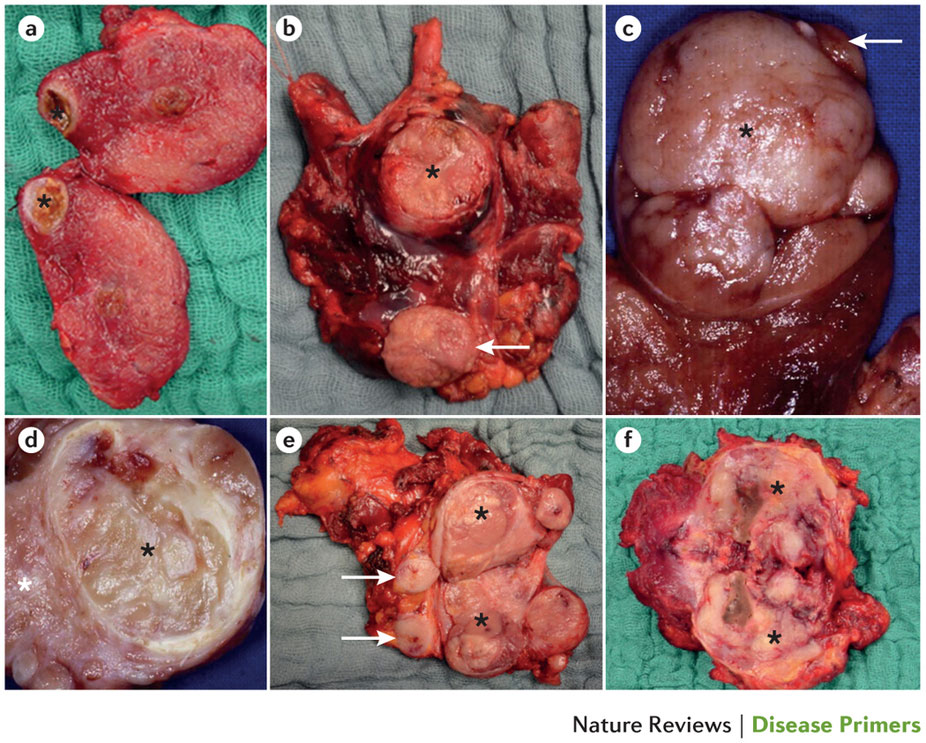濾胞細胞由来甲状腺がん
Follicular cell-derived thyroid cancer
2015年12月10日 Nature Reviews Disease Primers Article number: 15077 (2015) doi: 10.1038/nrdp.2015.77

濾胞細胞由来甲状腺がんは、ヨウ素含有甲状腺ホルモンを分泌する甲状腺の濾胞細胞に由来する。濾胞細胞由来甲状腺がんは、甲状腺乳頭がん(80–85%)、甲状腺濾胞がん(10–15%)、甲状腺低分化がん(<2%)および甲状腺未分化がん(<2%)に分類され、甲状腺未分化がんを除いて、予後は非常に良好である。高度な診断技術の開発と普及が推進され続けた結果、臨床的に意義のない結節が過剰診断されて、オカルト甲状腺乳頭がんの蔓延が助長されることになった。最も有効で最小限の積極的治療を行うためには個別リスク評価に基づく個別化医療が必要だが、分子および臨床レベルにおける甲状腺がんの捉え方が変わったために、個別化医療に向けた管理戦略の修正が求められている。甲状腺がん手術では、反回神経や副甲状腺のような甲状腺以外の構造体が損傷することがあり、それらは各々、手術例の2–5%および5 –10%に発生する。これらが損傷すると、切除しても差し支えない甲状腺が切除された場合よりも生活の質(QOL)に悪影響が及ぶ。放射性ヨウ素アブレーションに関連するリスクも、がんの不変/再発およびがん特異的死亡のリスクを上回ると考えられる。濾胞細胞由来甲状腺がんの体験者では、一般的に、転帰は良好でも健康関連QOLは低下している。この健康関連QOLの改善は、腫瘍の早期発見と治療の後遺症の最小化に左右される。今後の展望として、分子的および臨床的リスク層別化の導入をより普及すること、ならびに個別化治療における実施可能な標的を同定することが期待される。
PrimeView
濾胞細胞由来甲状腺がんは、4つのタイプに分類され、女性は男性の3倍罹患している。このPrimeViewでは、この腫瘍の分子的視点、最もよく見られるリスク因子および放射線照射後のヨウ化カリウム補充などの予防戦略について要約する。
本Primerの図解サマリー

